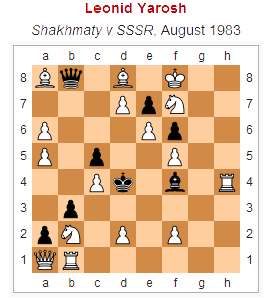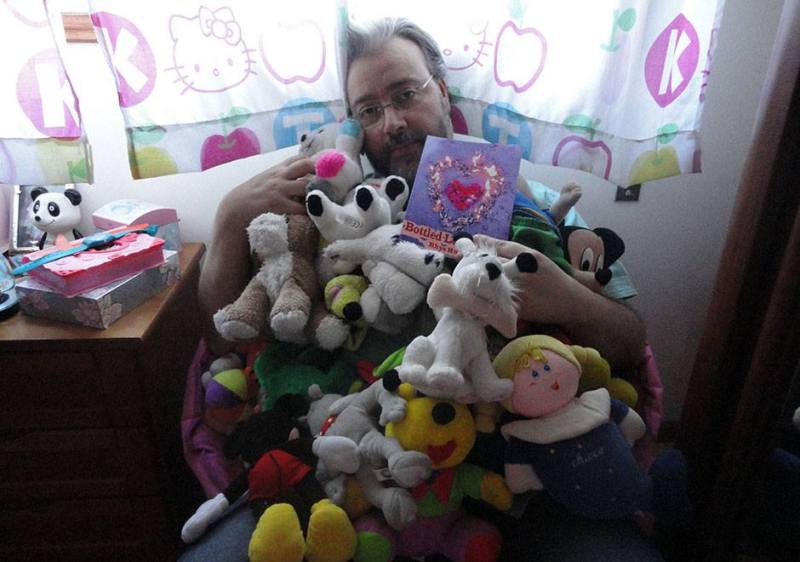bottled love story by rhys hughes
It’s easier to close a drawer with a key and then put the key inside the drawer, is easier to discover the speed of darkness, than be able to make a review of a book written by Rhys Hughes. I will, however, undertake this task, but only because I live in Meridian 0°.
A way of increasing with success the number of words to a review is to add things that at first glance have nothing to do with the book but with the author. For example: who knew that Rhys Hughes in 2007 has used a bottle to send in Toledo a message to Safaa via the Tagus River? The fact that he now puts the love in a bottle means that he has a loving fixation for bottles?
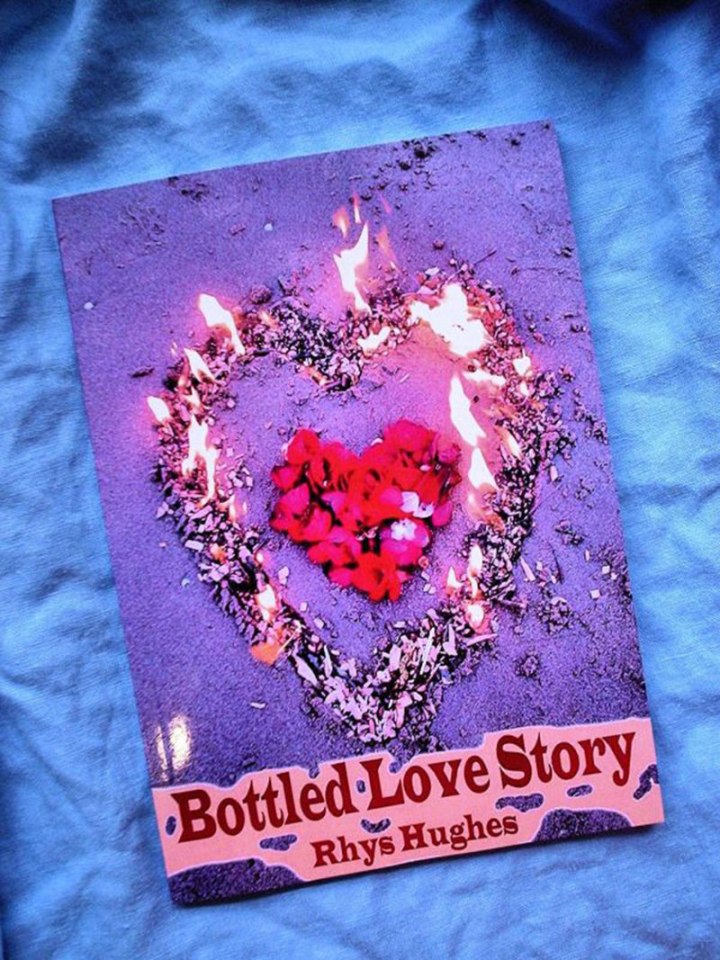
bottled love story
Now seriously.
chapter: The Story Begins with the Wave
In the first 16 pages of the book was difficult for me to find that I was reading a story of Rhys Hughes; but quickly I find the words of the villainous Rhys Hughes that even dares to enter as only he knows in the story, because? and I am forced to remind his own words:
As far as I am concerned there can only ever be two characters in a work of fiction — the author and the reader. The other “characters” are just words on a page and simply don’t exist.
Rhys Hughes
The chapter “The Story Begins with the Wave” is writing in the cinematographic style. We have the narration of Amira’s [1] wanderings interspersed with the adventures of Rufus Anton [2]; at the end of the story the two characters find themselves together in a unconventional and nothing loving way – I should add.
In this chapter we have an Rhys Hughes equal to himself, irreverent, tortuous, with ideas and a structure narrative that reminds us of the inventive skills of Dr. Karl Mondaugen. We have a bottle, a chess problem (the first time I read a book with a chess problem was the “Flanders Panel” by Arturo Pérez-Reverte) and the possible existence of the sea monster Xaratan.
The story begins with the wave because
AMIRA wrote her name on the sand of the beach in big capitals and when the tide came in it washed away the last two letters first, so she was left with a question that just needed the addition of a question mark.
“Am I?” she wondered.
She knew she must find an answer (…)page 7
The first answer

“Perhaps I am, perhaps not” (…)
page 8
A few lines later the author reveals an important characteristic of Amira for the unfolding of the story
Amira was curious about everything and this curiosity extended even to curiosity itself. What was curiosity? Why did it exist?
page 9
The second answer after reading the message discovery inside the green bottle send by Rufus Anton.

Not yet, not yet.
page 13
And so Amira turned and walked back the way she had come and to her great astonishment she found that the last two letters of her name written on the sand weren’t obliterated by the tide at all but had merely been detached from the others and had floated intact first out to sea and then back again.
Who’s Rufus, by the way? The author explains
(..) Rufus was one of those people who forget to worry about anything and he seemed to have an instinct that meant he always ended up where he ought to be, even if he didn’t recognise that final place for what it was when he got there.
page 16
And are the questions
“What is curiosity? Why does it exist?”
page 17
said by Dr Karl Mondaugen, “a mad scientist“, that continues to be what moves the story. It is, therefore, the curiosity that leads Amira to “the oldest part of the university” where “was a library full of strange books, one of which was a bestiary of imaginary animals that included an entry on the xaratan [3]. But the xaratan, of course, isn’t imaginary.“
At this time we are introduced to another animal that’s a real myth the Hound-Do-You-Do; see a photo of the animal with Ryhs Hughes.
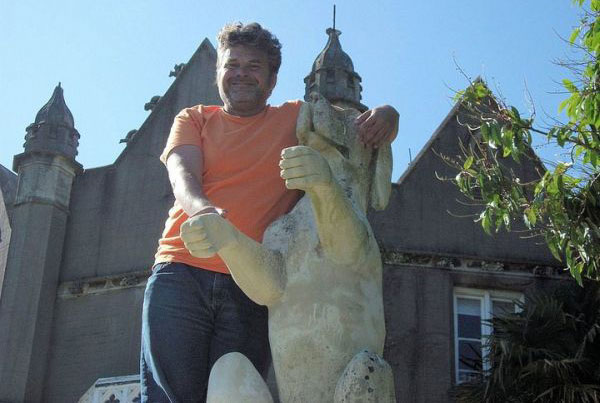
hound-do-you-do and rhys hughes
Rhys Hughes does not miss the opportunity to introduce himself in the story as only he knows
Although I am only the author of this story and not one of the characters in it, and thus must always stand outside rather than within whatever happens now or next, I am happy to state that I once met the Hound-Do-You Do on one of the rare occasions when I was drunk.
pages 19/20
Amira reveals in the following words to be a woman with a strong character and that isn’t up to handle random daydreams – lucky us the readers. I started to like her even more.
Amira said, “This story belongs to the characters and you, the author, should really stay out of it.”
page 20
Throughout this chapter we have several verbal pearls; and this is why I love some much reading Rhys Hughes
(…) For example, when the concept of ‘repetition’ was invented it was hardly of any distinction until it was invented yet again, and it fulfils its function more wonderfully each time it is newly invented.”
page 22
“He was the Half Mate on the clipper ship Toe Scissors which sailed out of Nailcutta.”
“You mean Calcutta,” corrected Karl.
“Yes, I do, but that pun doesn’t work as well. (…)page 23
They keep appearing many surprises but it’s on page 29 which is shown the greatest surprise: a “abandoned sea” chess game where
The cannonballs were pawns, the pistols were rooks, the suits of armour were knights, the tall hats were bishops, the sea-chests were kings and the cannon were queens and some pieces had been stained black and others white.
page 29
The chess problem that Amira will solve was created by Leonid Yarosh and it was “first published in March 1983 in the famous Russian chess magazine Shakhmaty v SSSR” [4] and “it is generally considered one of the greatest chess problems ever composed.” [4]
The words in this chapter continues to flow like the ocean waves. We have the ever present of the talented and magic Rhys Hughes. And he knows how to hold the reader to a story without using glue – fantastic! And when we notice we are looking at the last lines of the chapter.
He (Rufus Anton) was only dimly aware of a woman’s voice telling him that he had spoiled the game as she was about the make the move that would result in checkmate.
page 35
chapter: The Solution to the Problem
About this chapter I do not have much to say, not because I don’t want to, but simply because I can’t. I must blame the author for the way he wrote the chapter.
On the first pages Amira and Rufus begin to interact in a harmless way, but at the end of the story about the Xaratan the love begins to reveal itself. It is difficult for me to write about the chapter because from page 39 we have two stories simultaneously narrated: one “the main” story, other “the Xaratan” story.

new wine brand
When reached this part of the book is indifferent summarize what’s going on and is preferable to write how Rhys Hughes found graphically, so to speak, a way to tell the two stories at the same time. He ingeniously split up the pages into two columns.
In a column there is the story, that I call “the main” in which the font used is bigger; in another column we have the “xaratanic” story in which he used a smaller font. This artifice goes over 10 pages and it works very well.
I advise you to first read the story about the xaratan, keeping it in memory, step back 10 pages and read “the main” story. I laughed at the end exactly as Amira laughed.
The two stories “mate” perfectly – Rhys Hughes did a wonderful job. You need to read it.
From this union of words and after Rufus having closed the book and for
(…) the first time he looked at Amira properly, directly in the eyes, and instantly he lost all his old anxieties and acquired a set of new ones. His mouth opened and he said:
“You are as beautiful as a goddess.”page 47
As they say that God writes in mysterious ways, also Rhys can write about love in a different way, but consistent with his verbal traps, puns; only he can mesmerize the reader with these words:
“Then take my hand and stop me from drowning in your lovely eyes.”
page 48
“Lake of my eye? That’s singular. Don’t you mean lakes in the plural?”
“This is just one of the lakes,” said Rufus, as his shoes squelched. “No man can look into both of a woman’s eyes at the same time. His gaze will switch from one to the other.”page 48
this is Rhys at full steam. An he even have the chance to create a new wine brand: Chateau Cheval Sombre de la Mer.
The next chapter will be equally surprising and why? Because I read
This method of telling stories without using words is an invention of Italo Calvino and to him I now pay modest homage.
page 53
chapter: The Chamber of Crossed Destinies
This chapter is the easiest to comment. Where to start?
It’s full of pictures and are the images (tarot cards) that tell the story. And of course I will not recount the plot the cards are telling. I, only, can add that just reading this chapter you can realize not only the beauty of the chapter, but also the genius of Rhys Hughes.
And that single empty space was communal to both of them, so a collision of Fates was unavoidable.
page 60
chapter: The Thousand and One Kisses
And here’s the last chapter in which much is revealed.
The author is warned, again, to stay out of the story when he’s discovered disguised into a painter by our characters?
“I thought I asked you to stay out of this text and not bother your characters,” Amira said to me in a tone of weary disapproval.
page 64
The author attempts to justify is presence with brilliant puns, but
“You and your wordplay!” sighed Amira.
page 65
Once again the brilliance of Rhys Hughes is present in every line. He does not simply tell a story; he provides the reader with visual and language jokes – we just need to pay attention to the page 70 where we are faced with the transformation of the initial game of chess on a game of seduction.
I don’t dare to recount the details of this chapter. I only add that Rhys Hughes has created an ingenious story of love and – checkmate!
The book has another unusual features not seen in other books by Rhys Hughes, started:
- by the layout of title
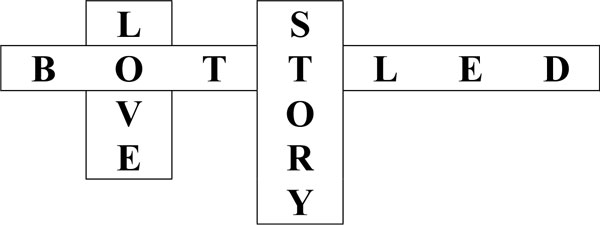
bottled love story – tittle
- by the existence of lots of pictures
- for typographic diversity like this one

- or this one – the book has this precious image at the beginning of some paragraphs.
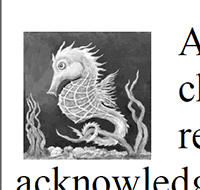
infos
[1] arabic name
[2] which meant “red-haired” in latin
[3] the sea monster Xaratan was first mentioned in a conversation between Dr Karl Mondaugen and Rufus. (page 18)
[4] from Wikipedia
